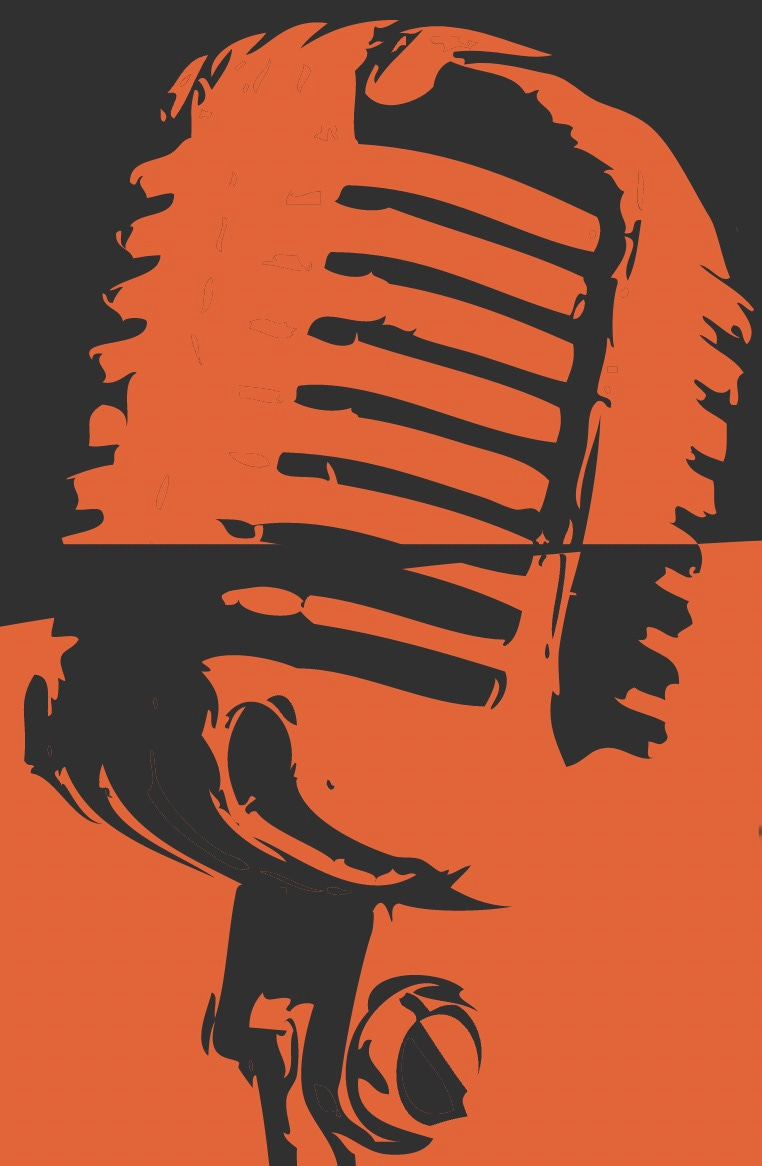I was doing remote work before it was uncool.
My first real job, as a 21-year-old college student, employed me as voice talent for a morning radio show on a 100,000-watt radio station on Florida's Upper Gulf Coast. I wasn’t tech savvy, but one thing I understood: on the upper right of the sound board was a big yellow button. I had to punch that thing every morning at 7:04:30 to go live.
One morning I started my breakfast broadcast right on time, launched into the weather forecast and delivered my opener. But as I hit the first song, I noticed a dark and ominous figure in my peripheral vision. It was the station engineer, standing just outside the sliding glass door of the studio, shaking his head and pointing at his ear.
My gaze swerved to the big yellow button: I had forgotten to go live. While Upper Gulf Coast listeners fiddled irritably with their volume knobs, I had been amiably chatting with my own headphones.
That big yellow button came to mind recently while reading journalistic takes on young professionals and remote work. Business Insider has claimed that “Gen Z Actually Hates Working From Home.” Whether or not that click-baity headline is reliable, a lot of early-career professionals are working remotely. Kastle’s Back to Work Barometer, reports that in 2600 buildings across the U.S. and across a 10-city average, less than 40% of occupants have returned to office. Responding to that data, Derek Thompson argues that “remote work is worse for new workers” where going to work means entering "a virtual room that calls itself a company but is basically a group chat.” Workplaces can and should do remote work better.
Last week’s Mode/Switch promised practical suggestions for what to do when you feel overwhelmed in the Zoom Room. Here are three counsels to discuss with your manager or to try with your team.
Make some rituals. Angie Thurston is a young professional who co-founded the Sacred Design Lab, a team of spiritually minded social entrepreneurs helping companies design practices that fit their workplace communities. In our interviews, she noted two factors that shape workplace life: loneliness and spiritual insecurity. Those conditions are difficult in a cubicle. They’re nearly unbearable on Microsoft Teams. Angie concedes that work shouldn’t be the place where Gen Zs and millennials seek ultimate meaning. But we can, she insists, borrow deep practices from religious traditions and in so doing cultivate nourishing relationships.
Angie Thurston, Sacred Design Lab
In a virtual space, such community rituals may be even more important than they are in physical spaces, because of the intensely performative dimension of internet life. We have a habit of thinking of online communication as primarily informative—but digital exchanges super-sensitize us to what communication scholars call the performative role of language, behavior, and interaction. After all, as J. L. Austin said long ago, communication doesn't just mean things; it does things.
You and your teammates can make up your own rituals. But here are a few to try: a weekly thanksgiving report, a daily moment of shared silence, an end-of-meeting open-mic, an instant-messaged word-for-my-day testimony. You can take it from there.
Put words, not people, on hold. Instead of giving more importance to explicit communication online, sometimes you should give it less—at least for the moment. Joycee Black is an interviewee I’ve told you about before.
She describes being moved to tears by a DEI training video on Zoom with her team. Unfortunately, her White colleagues were ready to just move on to the next thing. When she turned her camera back on, she put on what she wryly calls the Face, a strong and grave demeanor that indicates two things: everything is not okay—and we can’t talk about it right now.
Virtual communication complicates the question of what can be shared and what should be kept tacit. But your own version of the Face may well be a placeholder for a later, slower, and more richly attentive in-person conversation.
Expand the range of your digital reactions. A big problem with virtual communication at work may well be vague reports of feelings. Emails, texts, and instant messages are quickly crafted, and even more quickly scanned—a hurry that encourages imprecise reactions. For instance, you get an email that makes you mad. But is it anger, exactly? Or should you look for a richer way to describe how you feel? Examine your feelings more carefully, and you may surprise yourself. Maybe you’re not mad, actually. Maybe you’re bemused. Or disappointed. Or saddened. Or touched. Or amused. Or elated. Dr. Lisa Feldman Barrett’s book How to Do Things with Words encourages people to broaden their emotional vocabularies. Adding pixels to your feelings isn’t just about being precious. It’s about being precise for the sake of collaborative effectiveness.
Lisa Feldman Barrett, image from her TED Talk at the link above
I hope these suggestions help you and your coworkers go live in virtual spaces. Here’s a final story to show how digitality can surprise with unlooked-for vitality.
A few years into my early radio career, I launched remote radio work for real, when my wife’s law-school education moved us far from the Upper Gulf Coast. My station manager gave me a mic, some headphones, and a little sound board. He told me to try pre-recording my morning-drive shows in my Michigan living room. It was an experiment, awe agreed. We would just have to see how it went. And, you know, it worked far better than expected.
I liked remote broadcasting. Dee-jaying in my pee-jays removed the high stakes of the big yellow button and compelled me to find new ways to go live.
Eventually, I left radio and launched a second career in the academy. But then, just a few years ago—more than twenty-five years after I punched the yellow button for my first live show—my old radio station called. For years, they’d been replaying my programming, and somehow I’d developed a virtual following. But now, they needed to switch up their programming. Would I mind recording a farewell message to all those listeners who still felt connected?
Fortunately, I had a nearby podcast studio. But putting on headphones and sliding up to the mic felt uncanny, I have to say. In those few lines of script provided by the radio station, I met my former morning personality, an early-career doppelganger from a quarter-century before. But I didn’t give it too much thought. I captures the recording, sent off the audio file, and turned to course prep.
A few weeks later, a big package arrived on my desk with no return address. Inside, I found an envelope stuffed with handwritten letters from listeners responding to my pre-recorded farewell message. I was stunned. Their notes conveyed to me what I hope this newsletter says to you: remote work can go live beyond all expectation.
Geez, it was fun writing this week’s issue! If you value research-based writing that mines vocational experience for practical counsel, would you share it with your network? I know it’s an extra step in a world that feels like it has nothing but extra steps. But I’m asking, because a recommendation from someone like you carries a lot of weight. - Craig








